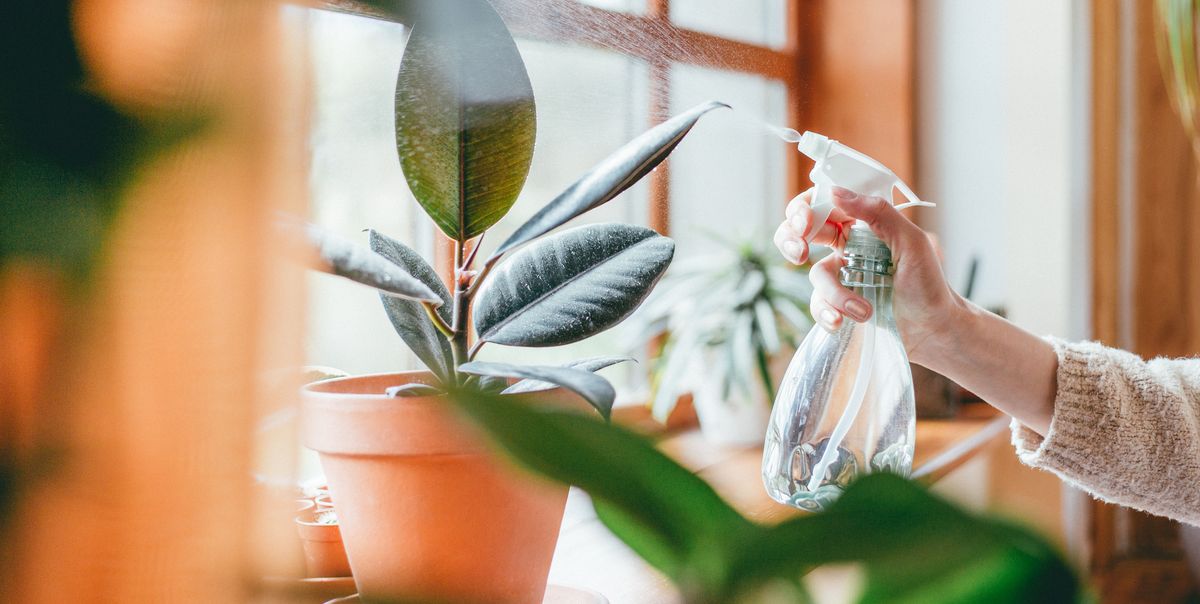Houseplants are an often underrated part of home decor. Not only do they add colour, texture, and vibrance to a room, they also purify the air and remove harmful toxins from the environment.
Whatever your preferred interior design style, there are plenty of plants to suit every taste, from eclectic maximalist to clean contemporary aesthetics. The secret is knowing which plants to choose and how to display them.
How To Ensure Indoor Plants Thrive
First things first. If you want to become a new plant parent, you’re going to want your plants to not only survive, but to thrive. For those not blessed with a green thumb, the easiest way to do this is to be mindful of how much TLC each plant needs. You can check more plants out at Prickle.
Choose Plants You Can Care For
There’s no point in investing time and money into a shade-loving plant if the sun streams in your living room window every day. Likewise, if you know you’ll forget to water the plants now and again, opt for a drought-tolerant plant that copes with a slightly haphazard watering schedule.
Choosing low-maintenance indoor plants you know you can care for is the best way to ensure they get to share your home for years to come.
What are the Best Low-Maintenance House Plants?
Spider Plant
Spider plants are the ultimate low-maintenance indoor plants. These undemanding house plants don’t need any pruning or feeding and are fine with light watering. Place them in bright indirect light and ensure the soil drains well, and these plants will tolerate a little neglect. They are also incredibly easy to propagate, meaning you can fill your home with ‘spider babies’ (which are much more attractive than they sound!) in next to no time.
When it comes to finding a spot for your little green friend, spider plants are truly versatile. Their long, slender, striped leaves look great spilling from hanging baskets but are equally happy sitting on shelves, tables or windowsills. Bonus points for being pet-friendly!
Dragon Tree
The dragon tree (we promise not all the plants on this list have scary names!) is the perfect house plant for beginners and is big enough to create a focal point with a slightly tropical feel. A fabulous air purifier, dragon trees are relatively slow-growing, which means they don’t need to be re-potted very often.
Dragon trees are native to Africa, which makes them pretty drought-tolerant. They store moisture in their trunks, so they forgive the occasional missed watering. Light isn’t a huge issue for dragon trees. While they are happiest in bright indirect light, they still grow in low-light rooms.
Snake Plant
Okay, it may be another plant with a slightly scary name (but not as terrifying as its other moniker of mother-in-law’s tongue!) but the snake plant is an ideal option for new plant parents. The pointed, sword-like leaves store moisture, so this attractive house plant requires very little watering. Wait until the soil has completely dried out before offering your snake plant another drink. The fact snake plants can go so long between waterings makes them ideal for anyone who travels frequently (or is just plain forgetful!)
Snake plants grow best in bright natural light but tolerate lower light conditions too – they just won’t grow as quickly. Avoid misting these indoor plants as they prefer dry air, and wipe the leaves now and again to remove dust and promote photosynthesis.
The Best Indoor Plant Display Ideas
As with most aspects of home decor, getting the most out of indoor plants relies on displaying them creatively. Don’t be put off though – it’s easy to create impact with a variety of house plants. Here are some indoor plant ideas to get you started:
Hang Them Up High
Hanging plants from the wall or the ceiling is a great way to draw the eye upwards and save shelf space.
The Best Trailing Plants for Hanging
English Ivy
Fast-growing and easy on the eye, English ivy is one of the best indoor plants for a hanging pot. It has a classic look that suits most interiors and is often variegated, adding plenty of colour interest to a room.
English ivy thrives in most light conditions and is perfect for hanging in an empty corner. It prefers slightly moist soil that isn’t too wet, so let the top inch or two of soil dry out between waterings. A monthly feed during the growing season helps this trailing ivy reach its full potential but it is easy to trim if it gets too long for your space.
String of Pearls
String of pearls is a delicate plant, and the leaves are easy to knock off, so hanging it up out of the way is a simple way to ensure it remains intact. This is a succulent indoor plant with small, round, bead-shaped leaves, hence the name.
Moisture is stored in the leaves, so water sparingly every couple of weeks, being careful not to over-water. As the leaves are so fragile, it’s best to place the pot on a saucer of water to soak up moisture for half an hour rather than watering from the top. Place it in bright indirect light and trim the tendrils whenever they become too long. These can be rooted in a pot to propagate into new plants.
String of Hearts
String of hearts are trailing plants that share a few characteristics with string of pearls. But rather than bead-shaped leaves, this unusual house plant features (you’ve guessed it) heart-shaped foliage. The tendrils can grow up to 1m long, so hang these indoor plants as high as you can for maximum impact.
Place string of pearls in bright or moderate light, keeping it out of direct sunlight. Water sparingly whenever the soil has completely dried out and fertilise once or twice per year.
Devil’s Ivy
Another trailing ivy plant, devil’s ivy is an attractive addition to any room, producing clean air with it’s heart-shaped glossy green leaves. This is a low-maintenance plant that doesn’t need much attention to flourish.
Also known as golden pothos, devil’s ivy prefers a sunny spot but grows well in low light too. If the spot is too dark any variegation on the foliage will fade. This isn’t a huge issue, it just changes the appearance of the leaves, but it’s worth bearing in mind. Weekly watering is ideal, and regular misting helps recreate the perfect habitat in dry rooms.
Create a Centrepiece
While floor-standing plants are often used to create a focal point, smaller plants are ideal for creating a striking centrepiece on a dining table, coffee table, or console table.
Boston Fern
Boston ferns love a bright spot out of direct light and heat sources, so a table in the middle of the room is the perfect place for your plant to take centre stage. The arching sword-like green fronds add texture to the smooth tabletop, making this one of the best indoor plants for displaying on tables.
Water around once a week and mist the fronds regularly to increase humidity and help keep dust at bay. Alternatively, place the pot on a tray of pebbles and water to accentuate the centrepiece while providing a moist environment.
Chinese Evergreen
Chinese evergreen plants are easy to grow and thrive in low light. The large, glossy, oval leaves are variegated in different patterns and bring a slightly exotic feel to the home. In spring and summer, mature plants produce small white blooms, similar to peace lilies. This is a great air purifier and is considered to be lucky, making it the perfect indoor plant for displaying prominently.
Chinese evergreen like humidity and appreciate being misted every few days. Keep the soil moist but not soggy, watering whenever the top layer feels dry and ensuring excess water drains freely. These plants are slow-growing and prefer to be slightly pot-bound, which means they don’t need to be re-potted often.
ZZ Plant
Formally known as Zamioculcas zamiifolia, the ZZ plant is a striking evergreen that is practically impossible to kill. In fact, it may even be the best indoor plant ever! Its bright green, glossy foliage grows upright and can reach over 1m tall if left unpruned.
The ZZ plant is an incredibly easygoing and forgiving indoor plant. It grows well in any light conditions and is tolerant of some neglect. However, if you’d rather look after your ZZ plant well, water it lightly every couple of weeks. Allow excess water to drain away and let the soil dry out before watering again.
Adorn Shelving with Glorious Greenery
Shelves don’t have to have the appearance of rows upon rows of books. Clear some space for photo frames and other trinkets to add personality to the unit. Plants are ideal for this. As well as creating an eye-catching effect, they literally bring a bookcase to life.
Jade Plant
This cute little succulent is believed to bring good luck to its owners. It boasts fleshy green leaves with a glossy shine, giving the plant a sleek appearance. This is a slow-growing indoor plant, so it can remain on the shelf for as long as you like – looked after well, jade plants can live for up to 70 years!
Native to South Africa, jade plants flourish in a sunny spot and store moisture in their thick leaves. Because of this, they only require light watering and are forgiving if you forget to give them a drink now and again.
Air Plants
Air plants are ideal for adding interest to a shelf. These interesting little plants don’t have roots, so they don’t need to be planted in soil. Place them on a saucer or tray, in a glass bauble or even a seashell to show them off. Air plants look fabulous dotted around on their own or grouped in a terrarium.
When watering an air plant, don’t just give it a little trickle from the can. Fill a bowl or tub with water and leave it out overnight. In the morning, dunk the plant in the water and leave it to soak for around half an hour. Doing this every week is plenty to keep the plant healthy.
Swiss Cheese Plant
Often thought of as a floor plant, younger Swiss cheese plants are ideal for placing on shelves. Their glossy foliage reflects the light and adds a contemporary feel to any room of the house. Swiss cheese plant leaves don’t produce their famous holes until the plant is much more mature, and young plants have solid, heart-shaped leaves on long, slender stems.
In the right conditions, Swiss cheese plants are easy to look after. They like bright indirect light and well-draining soil. Water whenever the top inch of soil feels dry, being careful not to waterlog the plant. Occasionally wipe the leaves with a damp cloth to keep them shiny and free of dust.
Growing plants indoors has many health benefits and helps reduce stress levels. But they also bring life to the home, filling it with greenery and an energy that can’t be found in other decorative pieces.











